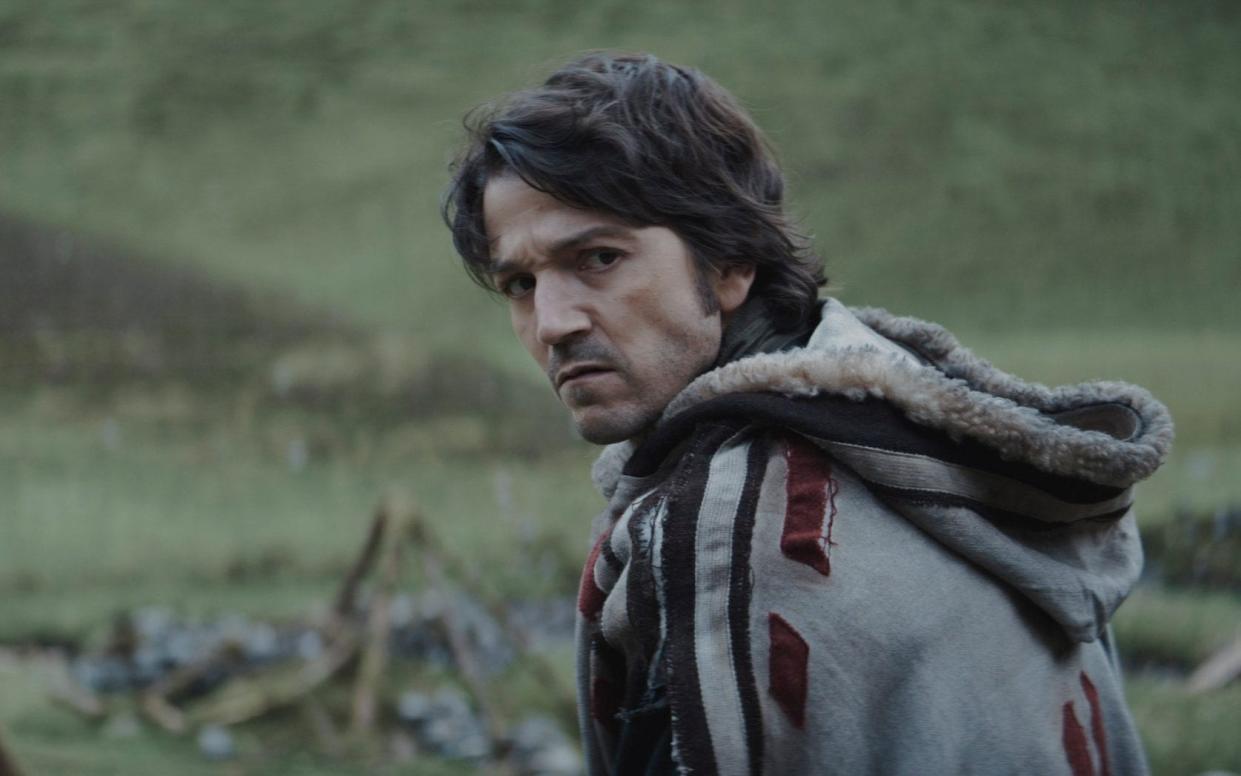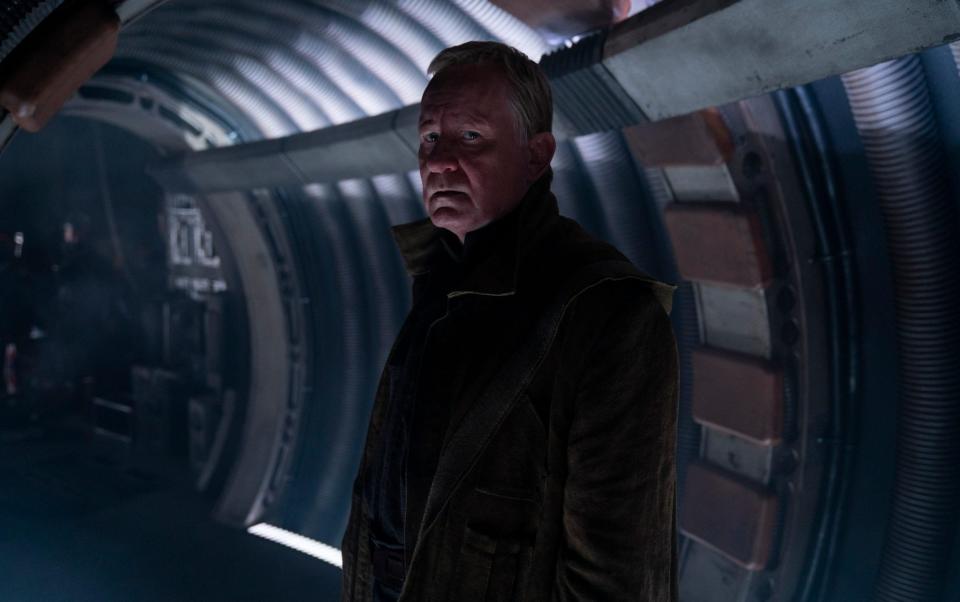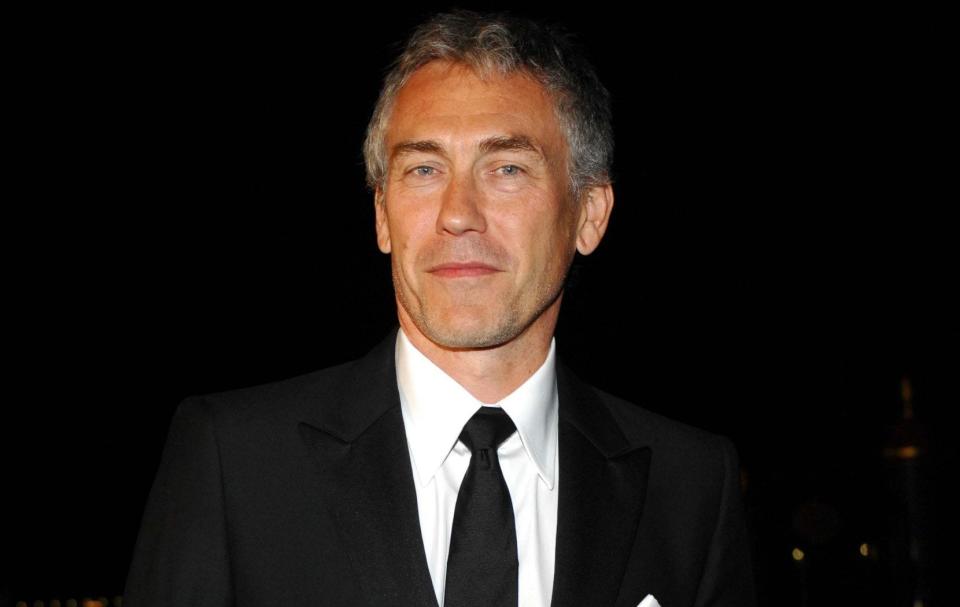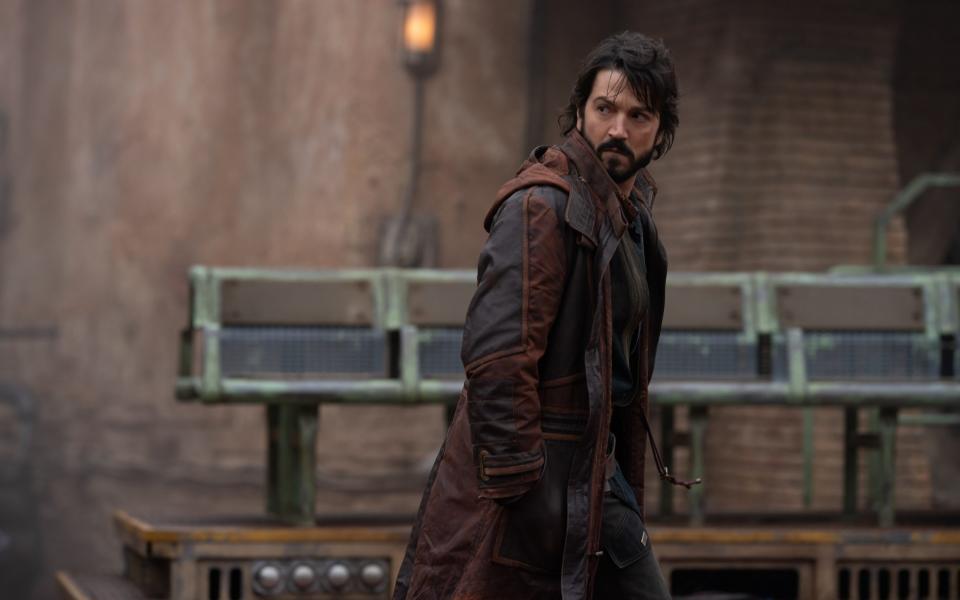Andor is a flop by Star Wars standards – and Disney doesn’t care

Star Wars is famously cavalier about the basic laws of physics. X-wings and TIE fighters roar around like boy racers in the sound-free vacuum of deep space. Parsecs measure time rather than distance (hence Han Solo making the Kessel Run in less than 12 parsecs). Darth Vader can mash your windpipe with a wiggle of his little finger.
That tradition of laughing in the face of the fundamentals of space and time is taken up with gusto by Andor, the $15 million-per-episode new Star Wars spin-off on Disney+. Week after week, it defies gravity.
By any reasonable metric, the show, from Bourne writer Tony Gilroy, is a disaster. It has the lowest ratings of any Star Wars series. Its cultural imprint is non-existent. In terms of viewers and profile, it has been eclipsed by She-Hulk and The Lord of the Rings: The Rings Of Power. It is screaming into a vacuum.
But Disney has already green-lit a second series (Gilroy says he will have the story wrapped with those additional episodes and that Andor will end after two seasons). Far from disappointed, the corporation is by all accounts pleased with the drama, which tells the story of anti-hero Cassian Andor and the formation of the Rebel Alliance.
Andor, in other words, is a dazzling flop. Have we gone to the Dark Side – or through the looking glass?
Gilroy’s contribution to Star Wars was always going to be different. As a writer of the Bourne movies and writer-director of Michael Clayton, his forte is bruised psychodrama. Disney knew that he had no interest in the pulpy escapism of The Mandalorian, the precision-tooled merchandise-flogging machine created by Jon Favreau.
True to that reputation, this prequel to Rogue One is slow and gritty. It takes four episodes for the story to get out of first gear. The starry cast that includes Diego Luna (as eponymous Cassian Andor), Fiona Shaw and Forest Whitaker compete to out-scowl one another. Andor has invented a new genre: Star Wars noir. And far from moving at the speed of light, it unspools tentatively, like treacle rolling uphill.
Andor also lacks the “cute” moments that Disney has ruthlessly embroidered into the rest of its Star Wars content. The Mandalorian had Baby Yoda, Obi-Wan Kenobi adorable Princess Leia. The Book of Boba Fett… turned into the Mandalorian halfway through and brought back Baby Yoda.
Gilroy blasts that formula into the coldest reaches of the Outer Rim. The first episode featured space prostitutes and anti-hero Cassian shooting a guard in the face. This is not the family-friendly fare many Disney die-hards are looking for.
Its reward has been stonkingly underwhelming viewing figures. The three episodes with which the series debuted failed to crack the top 10 of most streamed shows. Ratings were half those of Amazon’s (dreadful) Lord of the Rings: The Rings Of Power. You know you’re underperforming when you’ve been trounced by rubber-eared Tolkien fan fiction.
Compared to other Star Wars spin-offs, Andor’s performance is even starker. According to Parrot Analytics – a technology company that measures global supply and demand for entertainment content – viewership for the series on launch was nearly half that of Obi-Wan Kenobi. The Force is not with Andor.

But despite those underwhelming results, the consensus within the industry is that Andor is a win for Disney. How can that be? The logic is that, though audiences are lukewarm, critics love Andor, which has basked in four and five-star write-ups.
Good reviews are something with which the brand could do, coming off the lukewarm reception given to Obi-Wan – and the absolute trouncing handed out to J.J. Abrams’s The Rise of Skywalker in 2019. Disney needs a big critical hit to shore up Star Wars’ status within the industry.
Andor’s grown-up tone is also a valuable addition to Disney+. Despite attracting 152 million subscribers in less than three years, there is still a belief that it is a service for kids. Andor helps shift that perception as the closest thing yet to a “mature” Star Wars. It’s a flop – but the right sort of flop.
“Yes, House of the Dragon, Rings of Power and She-Hulk are sucking up a lot of the genre attention right now. They’re big names,” commented entertainment industry strategist Brandon Katz on Twitter. “But Andor is exactly the sort of high quality four quadrant (as opposed to younger skewing) title D+ needs to expand its demo[graphic].”
Gilroy has been upfront about trying to build an audience beyond the traditional Star Wars “family”. Rather than focus on “chosen” heroes such as Luke Skywalker he wants to tell the story of everyday people caught up in the Empire’s shadowy plan for galactic rule.
“This is a chance to do a show about the ordinary people of this galaxy and these tectonic, revolutionary pressures that are being put on them from all sides,” he told the official Star Wars website, adding that he regarded Andor as a “thriller”.
“Thrillers are always people under pressure. Usually, there’s an outer problem, but what’s great is all of the outer pressures that weigh down on people expose all of the other problems that they have in their lives.”

With Andor, Disney is thus boldly going where Star Wars has never previously ventured. This is in the context of the studio looking to return to the big screen with a new Star Wars movie written by Lost co-creator Damon Lindelof and directed by Ms Marvel’s Sharmeen Obaid-Chinoy. As that project gets underway, Andor can bring a much-needed infusion of credibility.
“It has been 10 years since Disney acquired Lucasfilm from George Lucas in a $4 billion deal, a decision that was called ‘one of the smartest acquisitions in history,’” wrote Julia Alexander, a director of strategy at Parrot Analytics in a piece for digital media site Puck.
“Four Star Wars feature films alone have grossed almost $5 billion at the box office, not to count the Star Wars Lands theme parks, merchandise sales and licensing agreements. But while Disney doesn't suffer from Star Wars financially, the company has struggled to advance creatively since the success of The Mandalorian.”

Andor is that next step. It represents a calculated gamble that there is a potential audience open to a more mature take on Star Wars. One executive who spoke to Parrot said: “They may not have gotten the viewership they wanted, but they chose this series to be the one to try something different.”
The other question, of course, is why fans haven’t flocked to a show that is widely regarded as the best live-action Star Wars series to date.
Jedi aficionados have been vocal about hating the Disney movies, which they typically claim are a “dumbing down” of George Lucas. They’ve been just as unsparing in their criticism of The Book of Boba Fett (cheap-looking, terrible plot) and Obi-Wan Kenobi (even cheaper-looking, even worse plot).
Yet when Disney takes on board these criticisms and releases a thoughtful and atmospheric drama that is respectful towards the Lucas-verse, its audience shrugs and fires up She-Hulk instead. The accusation that Disney has ruined Star Wars is long-standing. Disney can now hit back by pointing out that the true problem may be a whiny fanbase that refuses to grow up.
Andor is on Disney+ now

